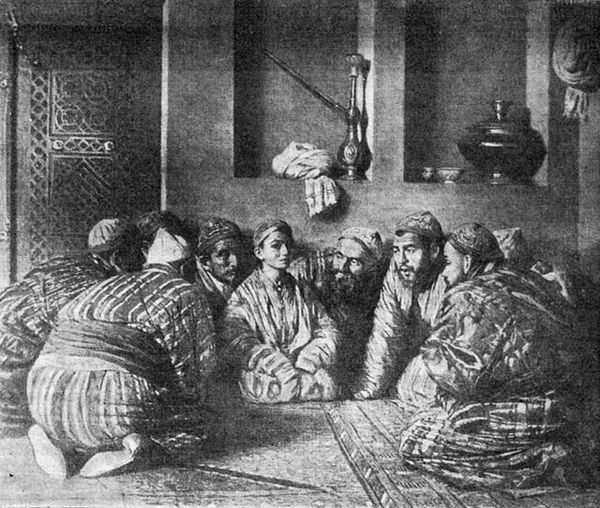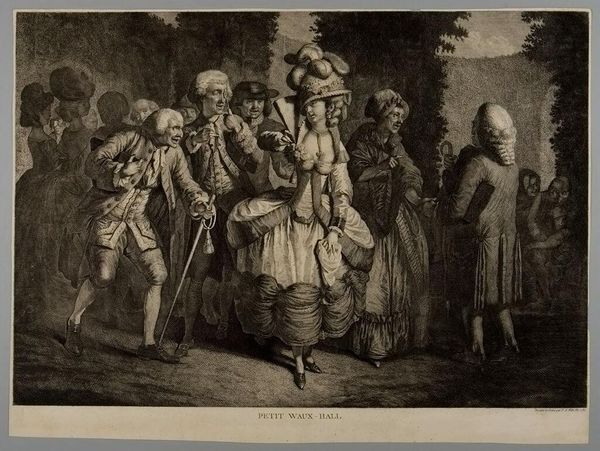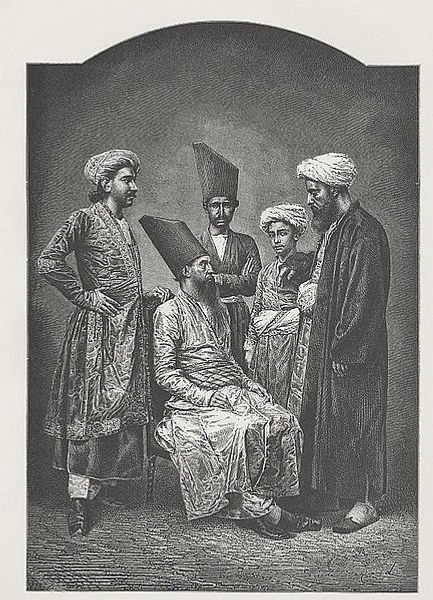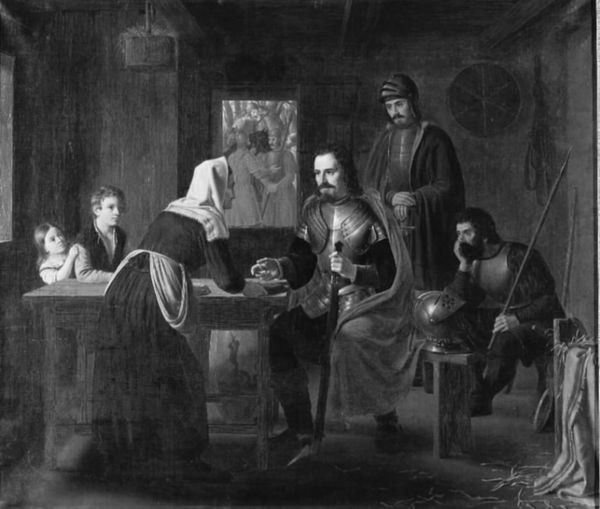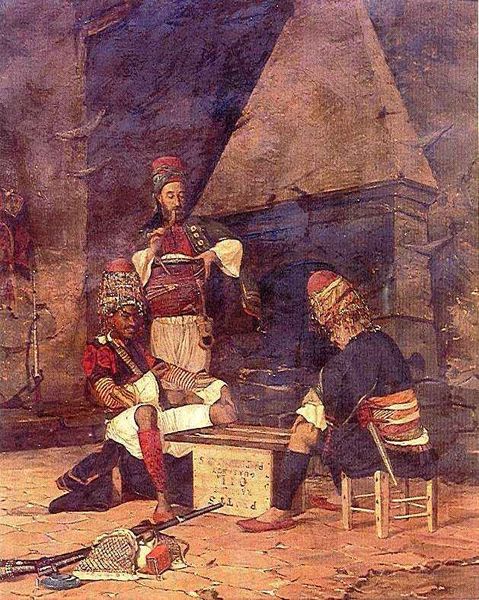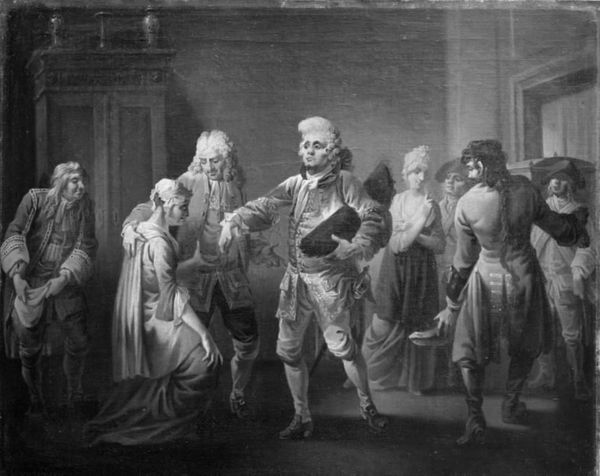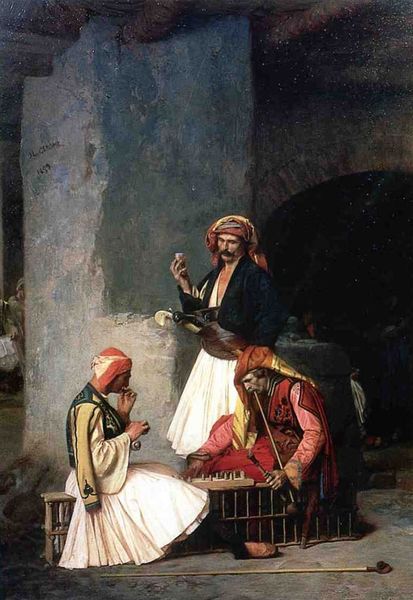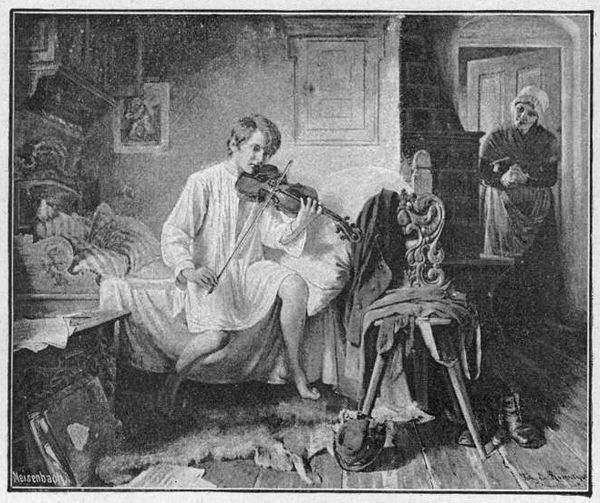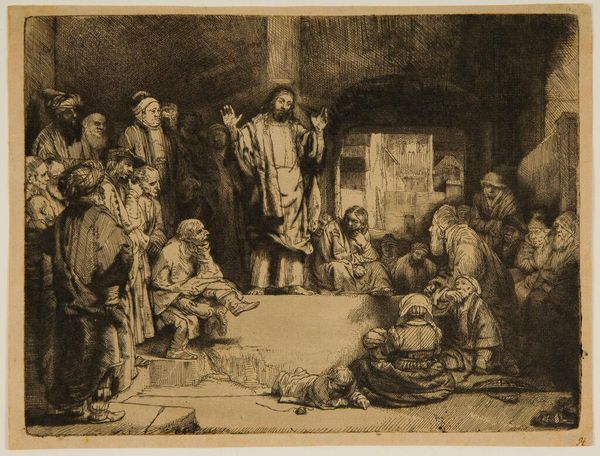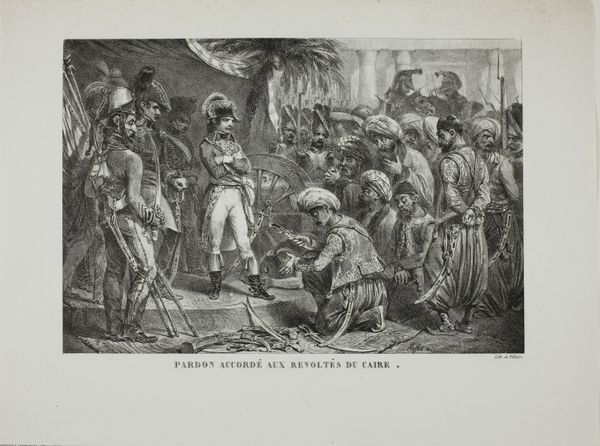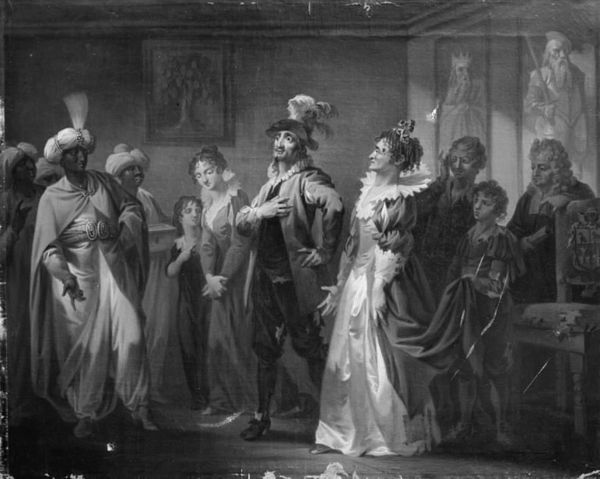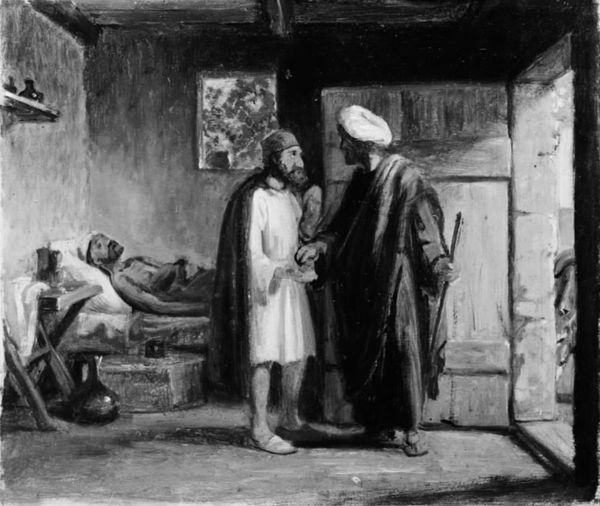
En gruppe græske, armenske og tyrkiske købmænd i et kaffehus i Wien 1813 - 1824
0:00
0:00
painting
#
portrait
#
portrait image
#
painting
#
black and white
#
orientalism
#
monochrome photography
#
genre-painting
#
monochrome
#
monochrome
Dimensions: 48.5 cm (height) x 60 cm (width) (Netto)
Curator: This painting by Johan Friedrich Fritz, dating from 1813 to 1824, is entitled "En gruppe græske, armenske og tyrkiske købmænd i et kaffehus i Wien" - "A group of Greek, Armenian and Turkish merchants in a coffee house in Vienna." Editor: What strikes me immediately is the starkness. It’s all monochrome, lending it a sense of timelessness. The arrangement of the figures around the table creates a very enclosed, almost secretive atmosphere. Curator: The painting offers insight into the social dynamics of Vienna at the time. It’s an orientalist work and important to remember that artistic depictions were affected by political and economic relationships between the West and the Ottoman Empire. We are presented with a genre scene but within a specific context, involving commerce, cultural exchange, and power dynamics. Editor: Structurally, there is a tension created by the sharp angles of the chairs and window versus the softer, rounded forms of the turbans and faces. The artist uses light and shadow quite deliberately, highlighting certain figures and obscuring others, perhaps symbolizing their individual roles within this merchant community. Curator: Precisely. Consider the very materiality of coffee at this period, how this commodity was cultivated and distributed. The act of drinking coffee, imported via global trade networks in locations like Vienna, was closely tied to imperial trade relations and the labor involved in cultivating and processing the commodity. Editor: Absolutely. And look at how their clothing signifies cultural identities—the elaborate headdresses, the cut of their robes—it's a study in visual language. One also wonders about the function of the pipes many are smoking; perhaps this action also speaks to status and their shared activity of leisure amidst negotiation. Curator: By looking at works such as this, we gain a more nuanced understanding of art production as a reflection of cultural exchanges during a key transitional period in European history, rather than isolated genius. Editor: I see what you mean; in purely formal terms, stripping away the colour emphasizes compositional relationships. I had initially read the painting in terms of tonal balance and geometry, but you offer compelling insight to appreciate the artist’s social commentary on a gathering of men in the Habsburg capital at that precise time.
Comments
No comments
Be the first to comment and join the conversation on the ultimate creative platform.
